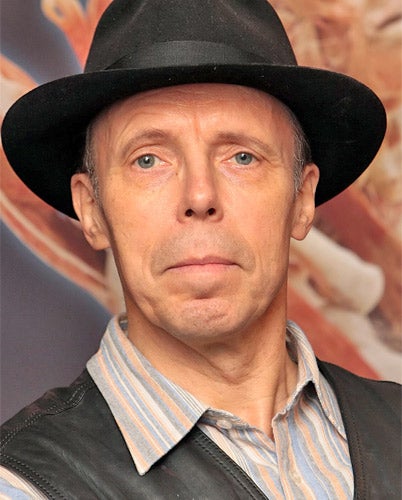Physician, plastinate thyself: von Hagens reveals he's dying – and wants to be preserved

Your support helps us to tell the story
From reproductive rights to climate change to Big Tech, The Independent is on the ground when the story is developing. Whether it's investigating the financials of Elon Musk's pro-Trump PAC or producing our latest documentary, 'The A Word', which shines a light on the American women fighting for reproductive rights, we know how important it is to parse out the facts from the messaging.
At such a critical moment in US history, we need reporters on the ground. Your donation allows us to keep sending journalists to speak to both sides of the story.
The Independent is trusted by Americans across the entire political spectrum. And unlike many other quality news outlets, we choose not to lock Americans out of our reporting and analysis with paywalls. We believe quality journalism should be available to everyone, paid for by those who can afford it.
Your support makes all the difference.His preserved dead bodies have spooked, captivated and disgusted the public. Now, Gunther von Hagens, pioneer of the controversial Body Worlds exhibitions, has added future plans to display his own corpse after being diagnosed with Parkinson's Disease.
Dr Von Hagens, dubbed "Dr Death" for his phantasmagorical shows of fleshless corpses, revealed to his employees over Christmas that he is grappling with the degenerative condition. He claims to have seven years to live, and has expressed his desire to organise an exhibition involving his own dead body. The anatomist uses "plastination" to replace cadavers' fats and fluids with silicone to halt decay.
"I want to decide where I will be exhibited," Dr von Hagens, 65, told the German newspaper Bild. "I will prepare for the plastination of my own body and decide the place where I want to be exhibited after my death."
He told his employees at his Plastinarium – his huge "factory" in Guben, close to the German-Polish border – that his family and "inner circle" have known about his condition for two years. He said he estimated the average duration of the disability to be nine years though he could reasonably expect "seven active years" before he was completely incapacitated.
"I can no longer hide the symptoms," he added in a statement. "My hands tremble, my language is vague, my movements are unco-ordinated. Again and again, I stumble around like a child. I have begun to lose skills I once had, knowing that they will never come back again."
Dr von Hagens also revealed he had been undergoing Deep Brain Stimulation, in which electrodes are implanted into a patient's brain to treat tremors, a common symptom of the disorder. He said he intended to scale down work at his laboratory. He said: "Parkinson's has changed my life and compelled me to change the course of my life's work."
He added that he intended to spend his remaining years developing a digital anatomical "atlas", along with testing and filing patents for further anatomical techniques. "I would like to create a new body of work reconciling human anatomy and art, a continuation of the work of the Renaissance anatomists that I am calling 'aesthetic anatomy', for exhibitions destined for art museums."
The scientist invented the "plastination" process in 1977 while working at the University of Heidelberg, and patented it the following year. The technique was first used on human subjects in the 1990s, with Dr von Hagens putting on his first Body Worlds exhibition in 1995 in Tokyo.
The shows, involving corpses displayed in often bizarre positions – such as riding skateboards or playing with guitars – have now been to more than 50 venues around the globe and have been visited by an estimated 26 million people.
In 2002, Dr von Hagens performed the first public autopsy in Britain in 170 years. It was shown on Channel 4 later the same year and resulted in 130 complaints to Ofcom.
Regarding any future plans to display Dr von Hagens's corpse, Professor Nick Bostrom, the director of the Future of Humanity Institute at the University of Oxford, said: "I don't know about the ethics, but it seems at least aesthetically right that this artist's own body should become the final instalment of his life's work."
Join our commenting forum
Join thought-provoking conversations, follow other Independent readers and see their replies
Comments